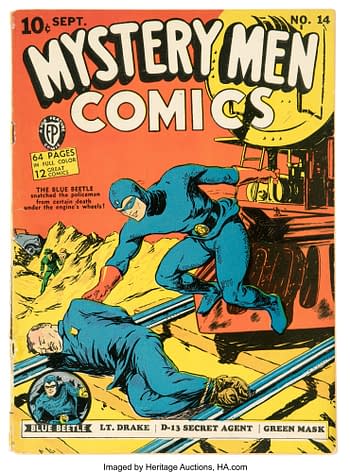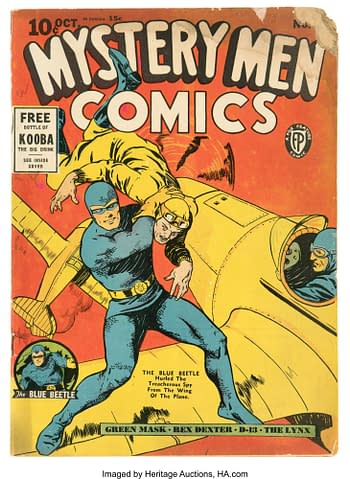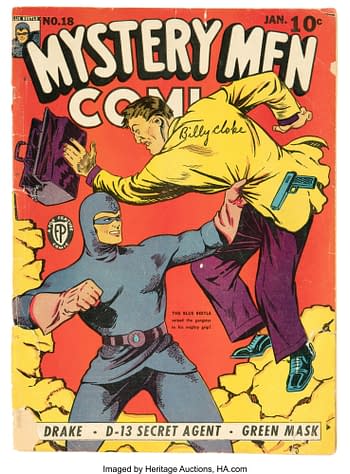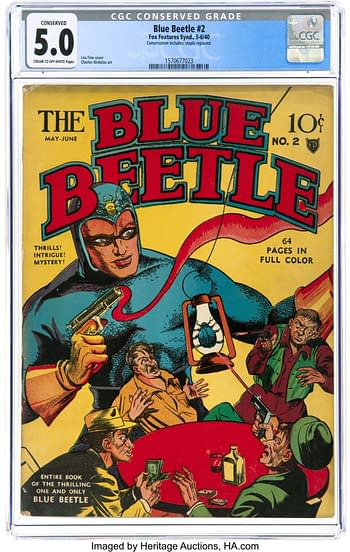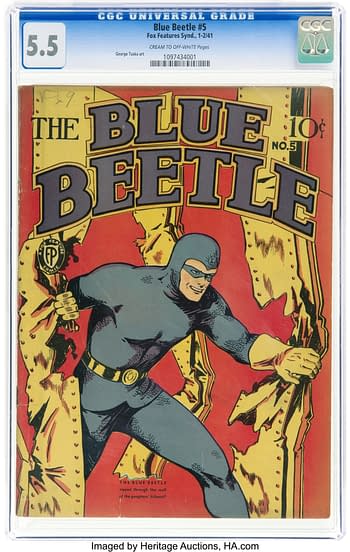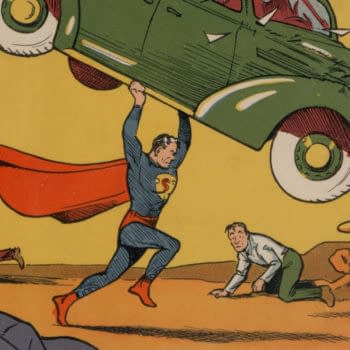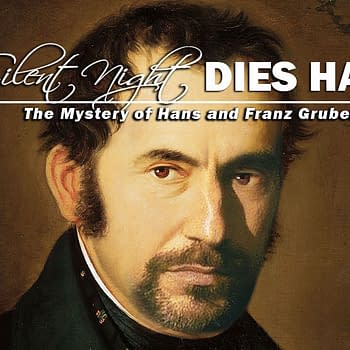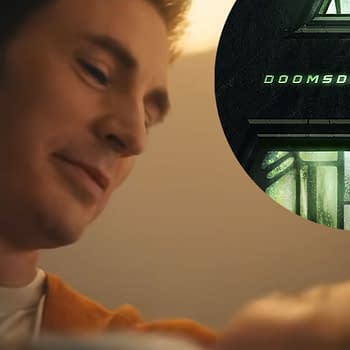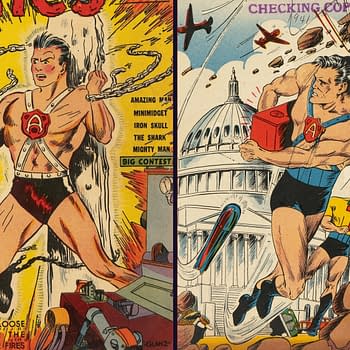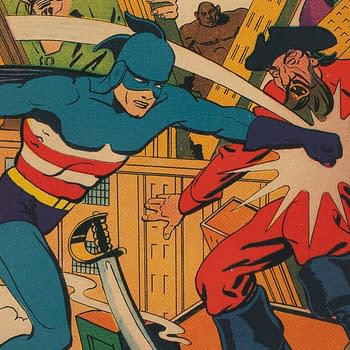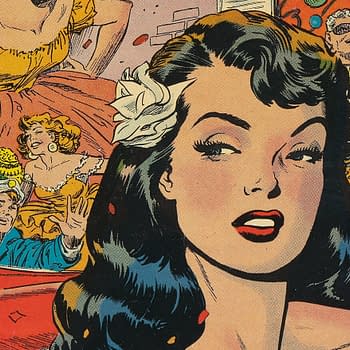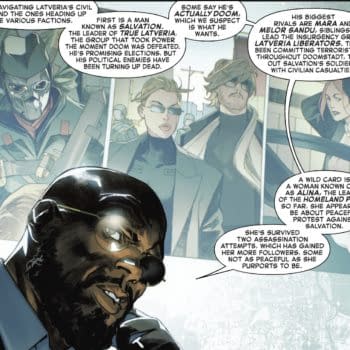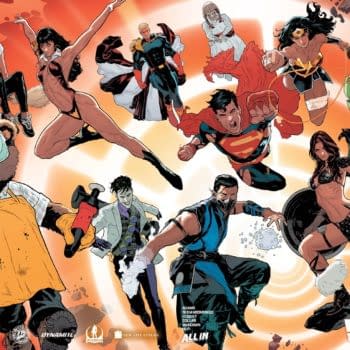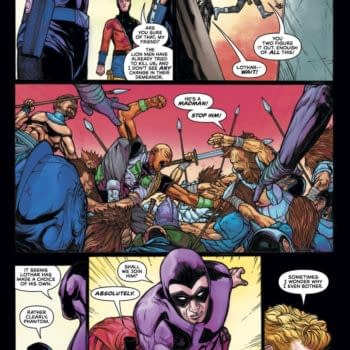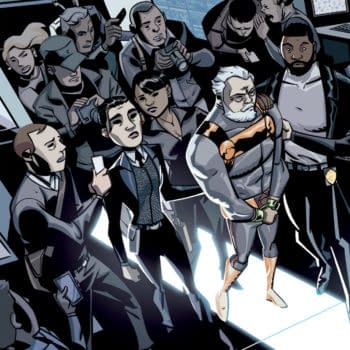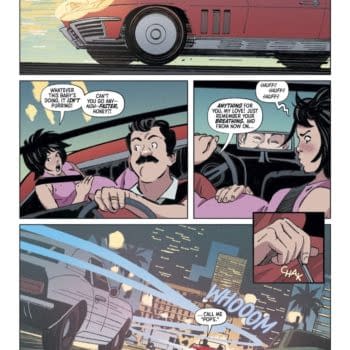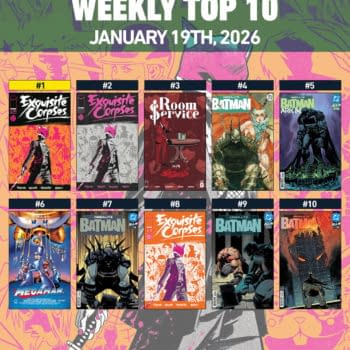Posted in: Comics, Heritage Sponsored, Vintage Paper | Tagged: Fox Feature Syndicate, golden age
Blue Beetle's 1940 Comic Book Series Power-Up, at Auction
1940 was Blue Beetle's year, with the launch of his own series, a newspaper strip and a radio show which combined to create a new origin.
Article Summary
- 1940 was pivotal for Blue Beetle with his own series, newspaper strip, and radio show, introducing an expanded origin.
- First appearing in Mystery Men Comics, Blue Beetle's backstory was revamped in 1940, detailing Dan Garrett's motivations.
- The newspaper strip brought unique elements and characters, while the radio show solidified Blue Beetle's mythos.
- Blue Beetle's comic book series introduced core elements from both radio show and newspaper strip, crucial to his lore.
1940 was the Blue Beetle's year. After launching in June 1939 in Mystery Men Comics #1, Dan Garrett, the Golden Age Blue Beetle would get a newspaper strip starting in January 1940, and his own series which hit newsstands around the same time. A radio show started in May 1940. Like a lot of superheroes, especially in the Golden Age, his origin evolved over time, and in the case of Blue Beetle the character got an immediate soft reboot of sorts in the comic books directly after the launch of the radio program. While much of the focus for collectors has remained on the character's early Mystery Men appearances, the Blue Beetle title itself and the later Mystery Men Comics issues contain important material as well. Among others, Blue Beetle #1, #3, and #5 are important moments of that change in the comic books, and there are many other Golden Age issues of Blue Beetle, and Mystery Men Comics are up for auction in the 2024 September 26 – 27 Heroes of the Golden Age Comics Showcase Auction #40265 at Heritage Auctions.
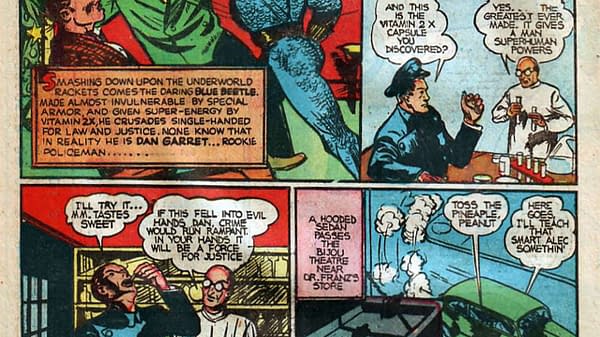
Blue Beetle's Backstory
The developments in 1940 for Blue Beetle commenced with the debut of Blue Beetle #1, which has a copyright date of January 2, 1940 and gave the character an in-depth backstory. Earlier Mystery Men Comics issues had explained little of the character's background elements. He debuted as a classic masked mystery man, and his costume and some gadgetry were slowly and somewhat sporadically introduced. The important supporting character Dr. Franz, the druggist who would serve as the Blue Beetle's confidant, advisor, and general technical support, was introduced with little explanation in Mystery Men Comics #5.
Many of these elements and the Blue Beetle character itself gained some clarity beginning around the time of the debut of his own series. Blue Beetle #1 explains Dan Garrett's somewhat Batman-like background. As a child, Garrett's mother became a victim of the global flu pandemic that swept the world 1918-1920. This caused him to be more independent and self-reliant than most other kids, and propelled him to excellence in academics and athletics as he attended college, as well as becoming street-smart. When Garret was a young man, his father was murdered by gangsters, prompting him to become a police officer and ultimately the Blue Beetle.
The Newspaper Strip Blue Beetle
While the 1940 marketing blitz seemed well-timed as the series, newspaper strip and radio show launched in succession, each part of it feels very different from an editorial point of view. Of course, some of this is due to the requirements of these different storytelling forms, and in the most famous example of this, the unique elements introduced to the Superman mythos by his own radio show are somewhat well known. But even considering the differences in the storytelling format, the Blue Beetle newspaper strip is an oddity. Although I don't have access to all of the daily strips, it appears to be substantially different in content and tone from the comic books. The druggist confidant who knows his secret identity was originally introduced in the strip as Abe Krantz rather than Dr. Franz as in the comic books and looks like a substantially different character. The strip takes some pains in introducing a woman named Ruth Hale, who discovers the character's secret identity of Dan Garrett, but the subplot ends up going nowhere. Perhaps most strangely, the Blue Beetle himself was not in the strip for about a month in the middle of its brief run after getting injured in a fall. The daily strip debuted on January 8, 1940 which was followed sometime after by a Sunday page. The Sunday page appears to be reformatted pages from Mystery Men Comics.
For all its disconnection from the comics, the daily strip did introduce at least one important element that was then used in the comics and radio show. The March 21, 1940 Blue Beetle strip introduces Vitamin 2X, as Dr. Franz (who goes unnamed, but is now drawn just as he is in the comic books) hands it to Dan Garrett, who calls it "a wonder", and the matter is left at that without further explanation.
- Mystery Men Comics #14 (Fox, 1940)
- Mystery Men Comics #15 (Fox, 1940)
- Mystery Men Comics #18 (Fox, 1941)
Blue Beetle's Radio Reboot and Beyond
But it was the radio show debut on May 15, 1940 that would provide the most complete template for the origin of the character's abilities, borrowing elements from both the comic strip and the comics books, clarifying them for the radio audience and combining them into a soft reboot of sorts. As explained in the introduction of the debut episode, "A crusader for law, in reality, Dan Garrett, a rookie patrolman, loved by everyone but suspected by none of being the Blue Beetle. As the Blue Beetle, he hides behind the strange mask and a suit of impenetrable blue chain armor flexible as silk but stronger than steel."
A bit later in the episode, Dr. Franz is introduced as a "friend and secret advisor… who operates a little apothecary shop in one of the great city's side streets", as Garrett thanks him for the "blue chain armor you made me and that mask are a great protection". And finally, Dr. Franz explains the Vitamin 2X mystery with, "Danny, I want you to take this capsule. It's my secret to 2X Formula. It will bring you a speedy recovery. My formula will save your life, restore you to health in 24 hours, but also give you greater vitality, keener eyesight, almost superhuman mentality, and it will give you abnormal strength, you will be a tough hombre…"
These elements make their way into the comic books beginning in Blue Beetle #3 (on sale around June 1, 1940) as we see Dr. Franz handing Blue Beetle a bottle of Vitamin 2X again here. The same story also introduces a blue-colored car for the character, which is said to be composed of super-strong metal invented by Dr. Franz, and appears to contain some high tech gadgetry on its dashboard. The Blue Beetle car had been alluded to in a March 1940 sequence in the comic strip, capable of using infrared light to find other vehicles in low-visibility conditions in combination with a dashboard display.
The next month, both Mystery Men Comics and Blue Beetle introduce their stories with a blurb remenicent of the radio show explanations: "Smashing down upon underworld rackets comes the Blue Beetle, made almost invulnerable by special armor and given super-energy by Vitamin 2X, he crusades for law and justice. None know that in reality, he is Dan Garrett, a rookie policeman."
Blue Beetle #5 then makes all of these elements a bit more clear, finally showing Dr. Franz giving Garrett the armored costume in one story, and explaining the development of Vitamin 2X in another. This one probably deserves a bit more attention from collectors than it gets, and it's worth noting that CGC's Blue Beetle #6 label note of "origin of Blue Beetle" appears to be incorrect. They probably mean #5.
It's hard not to wonder if the introduction of Vitamin 2X was a crafty way of promoting Victor Fox's notorious and legendary attempt at launching a soft drink, Kooba Cola. He began advertising Kooba the month after Vitamin 2X's introduction, and marketing promoted the cola's "invigorating" inclusion of Vitamin B-1. Fox briefly introduced the "Kuba Kid" in Blue Beetle #9, who gains strength from drinking the cola. In Blue Beetle #5, Garrett is shown downing a Vitamin 2X pill with a glass of water and enjoying the sweet taste.
These plans would be undone when Holyoke took over the title in 1942 (on the cusp of getting a Blue Beetle movie serial into production at Columbia, no less). But for a brief, golden moment during 1940 and a bit beyond, the stars had aligned to propel the character to rising popularity. Blue Beetle #1, #3, and #5 are important signs of that change in the comic books, and there are many other Golden Age issues of Blue Beetle, and Mystery Men Comics are up for auction in the 2024 September 26 – 27 Heroes of the Golden Age Comics Showcase Auction #40265 at Heritage Auctions.
- Blue Beetle #2 (Fox Features Syndicate, 1940)
- Blue Beetle #5 (Fox Features Syndicate, 1941)



